Wearing A Cape Of Iridescent Blue, This Diminutive Bird Tops His Look Off With A Crown Of Fiery Red, And, Or Yellow!
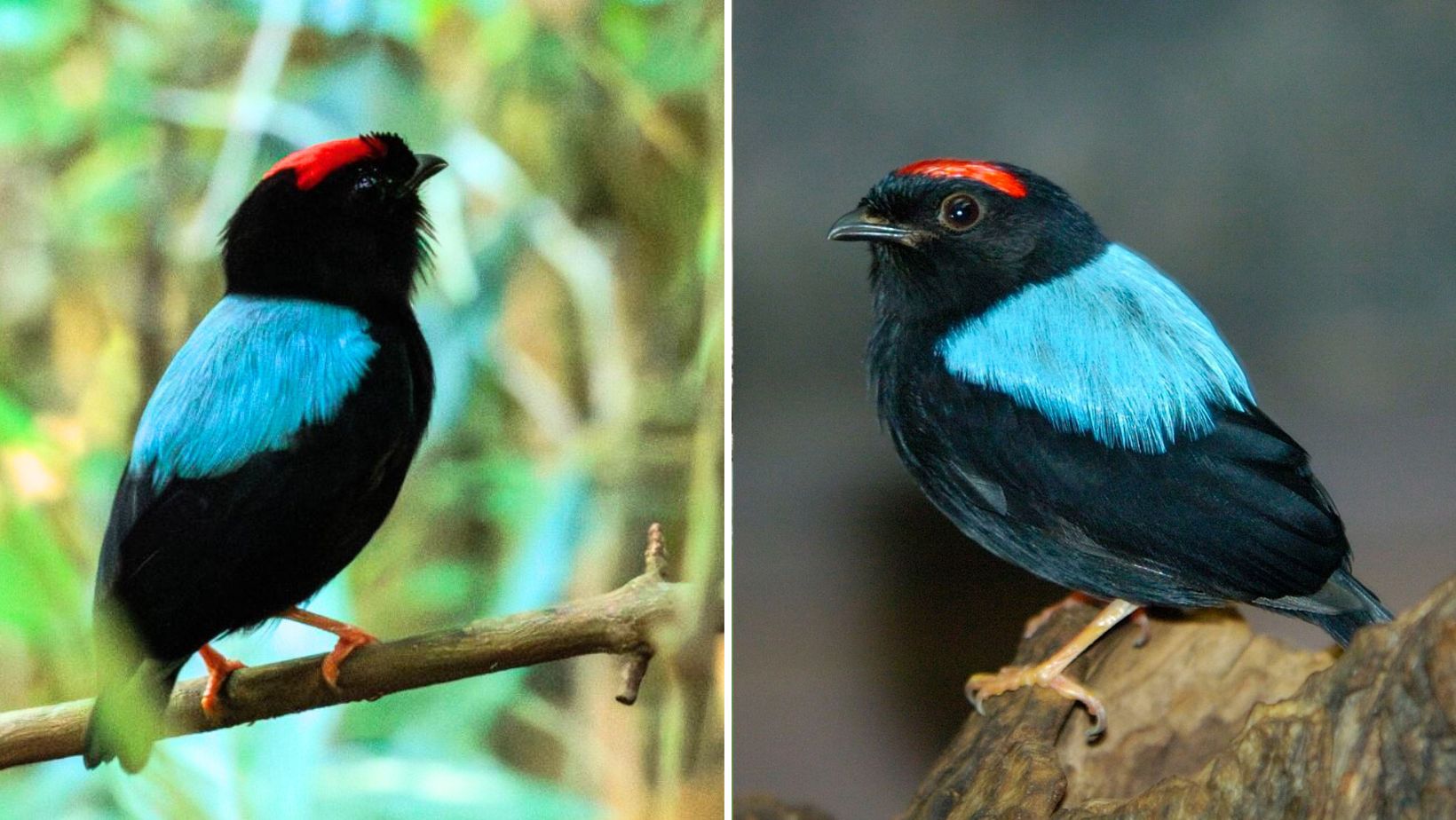
A diminutive bird typically found in riverine and gallery forests across both forested and savanna landscapes, it tends to blend into its surroundings when not engaged in display behavior.
Meet the Blue-backed manakin:
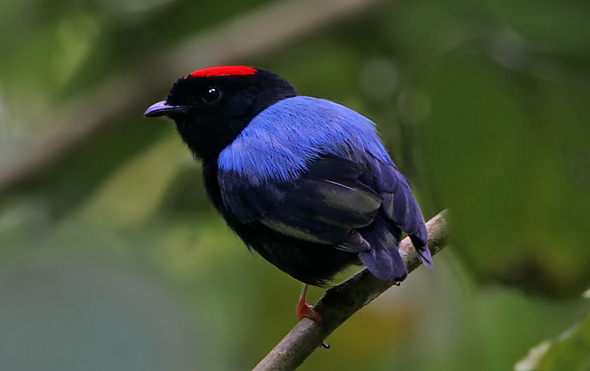
Description: The blue-backed manakin (Chiroxiphia pareola) is a petite passerine bird resembling other manakin species. The blue-backed manakin flaunts vibrant colors and a compact physique, measuring around 13 cm and weighing approximately 19 g. Male individuals feature predominantly black plumage with a vivid blue back and pale orange legs, while the crown may be red or yellow, particularly in the southwest Amazonian variant.
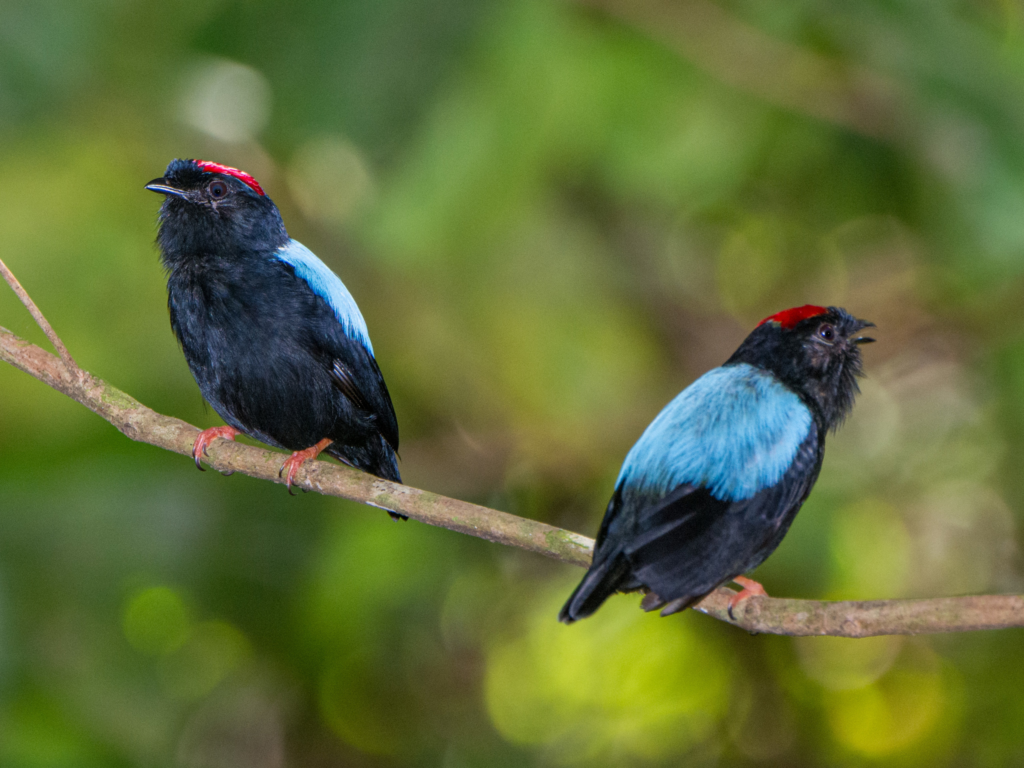
Females showcase olive-green upperparts and lighter underparts.
Related reading:
– This Showboating Bird’s Striking Presence Is Further Enhanced By A Highly Unique Talent, His Musical Wings!
Young males exhibit olive tones with hints of red on the crown and a budding blue back.

Distribution: The blue-backed manakin thrives in various regions, including southern Colombia, eastern Venezuela, the Guyanas, northeast Brazil, the Amazon Basin, Bolivia, Ecuador, Peru, and Tobago. A separate population exists along the coastal strip of southeast Brazil. However, it is notably absent in the northwest Amazon Basin.
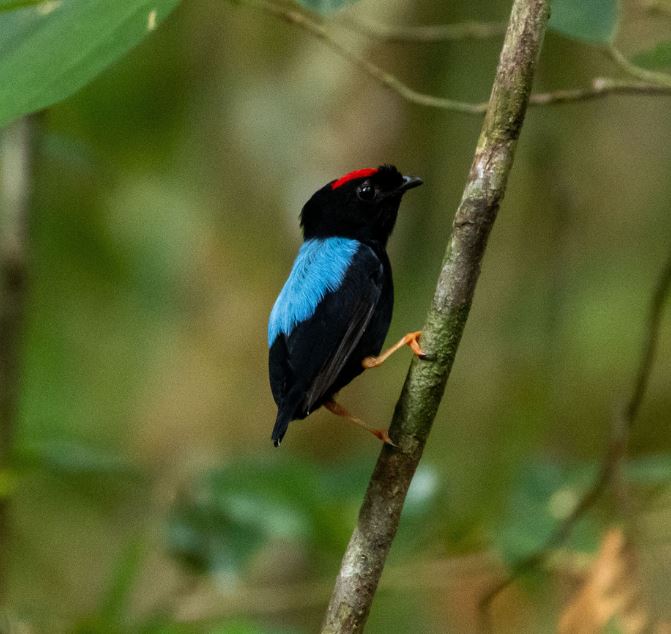
Habitat: Typically found in dry and moist deciduous forests, this manakin avoids dense rainforest environments.
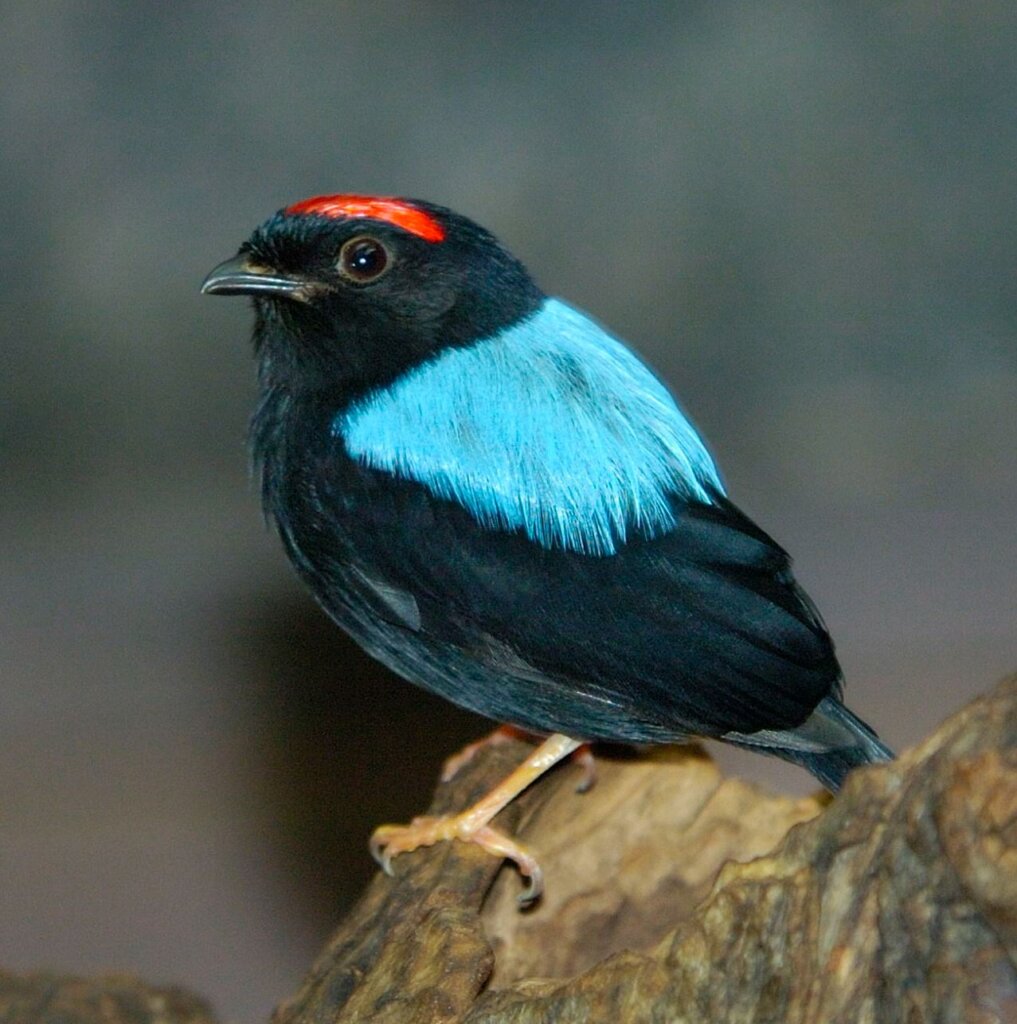
Breeding: During breeding displays, male blue-backed manakins perform a unique cooperative ritual, where pairs of birds perch side by side on bare sticks, alternately jumping and emitting buzzing calls. When a female approaches, the perched bird moves backward beneath the jumping bird, resulting in a vertical circling motion. Group displays involving up to eight birds are not uncommon. The female constructs a twig nest in a tree, incubating two brown-mottled white eggs for approximately 20 days. In addition to their buzzing display, blue-backed manakins produce various calls, including a distinct whee-whee-CHUP, sometimes synchronized by two males.
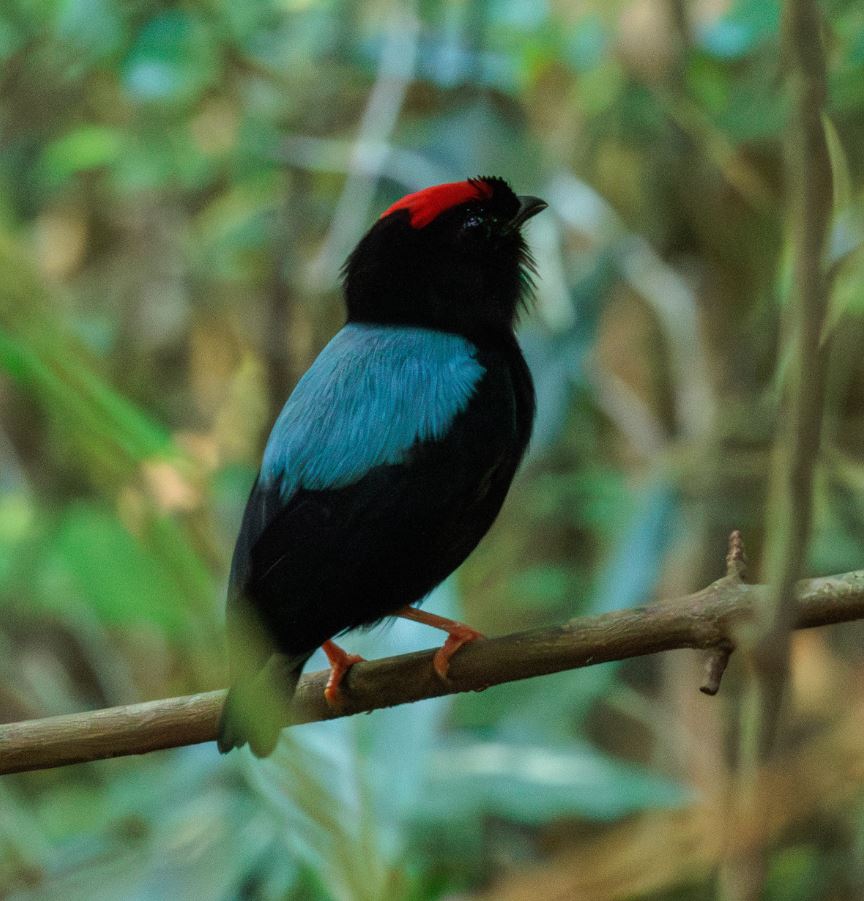
Status: This species enjoys a fairly common presence across its broad habitat, earning it a conservation status of “least concern” according to the International Union for Conservation of Nature.
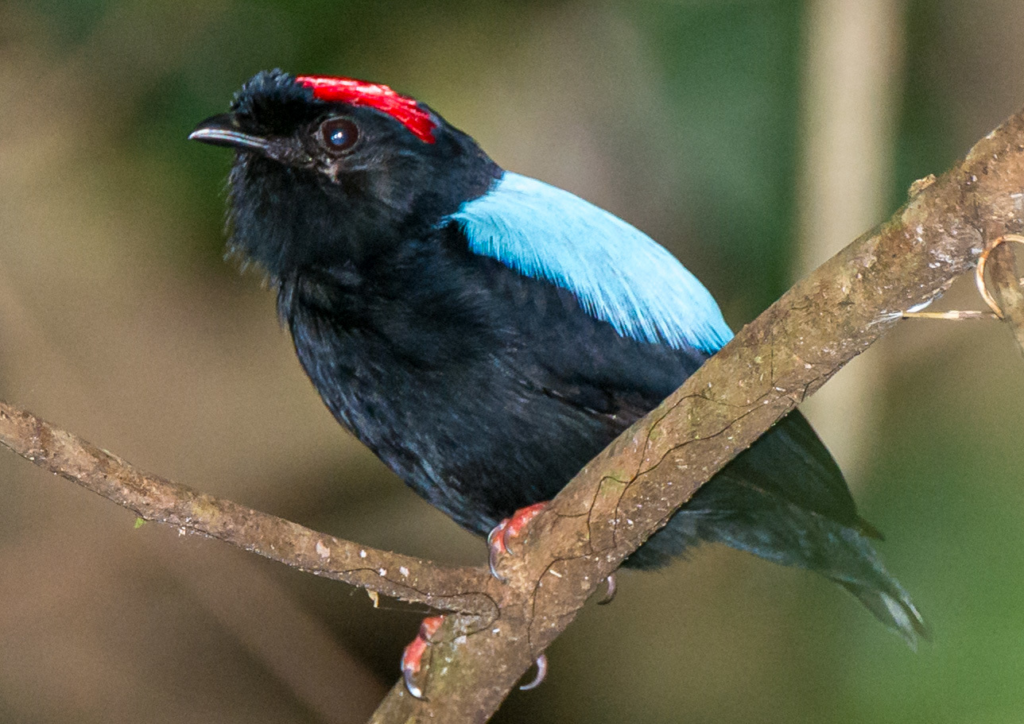
Listen to this bird next:
This article uses material from Wikipedia.org which is licensed under the GNU Free Documentation License via Copyright Wikipedia. Images on this page are the sole property of the photographers (unless marked as Public Domain). Please read the license and or contact the photographers directly before using them for any purpose. Thank you all.
His Stunning Fluorescent Cap Perfectly Compliments His Equally Stunningly Dynamic Dance Moves!
Please SHARE this article with all your bird-loving friends and family.






